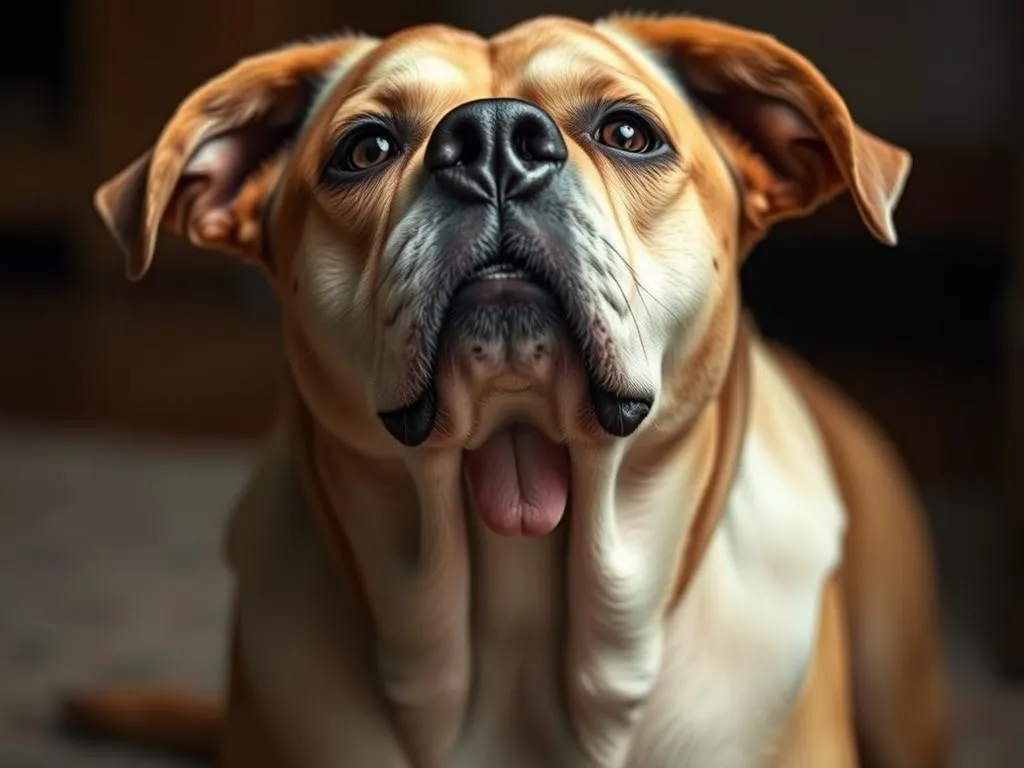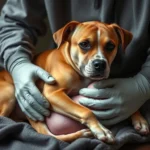
Monitoring your dog’s health is vital to their overall well-being. As a responsible pet owner, you might notice changes in your furry friend’s body, such as lumps. If my dog has a lump on their chest, understanding the implications of this finding is crucial. Lumps can signify a variety of health issues, and it’s essential to be proactive in monitoring changes.
Understanding Lumps on Dogs
Types of Lumps
Lumps on your dog can range widely in nature. They may be benign, meaning they are non-cancerous, or malignant, indicating a potential cancer risk. Here are some of the common types of lumps you might encounter:
- Lipomas: These are soft, fatty lumps that are usually benign and common in older dogs.
- Cysts: Fluid-filled sacs that can form due to blocked glands; they are generally non-threatening.
- Tumors: These can be benign or malignant. Malignant tumors require immediate attention.
- Abscesses: These are infections that lead to pus accumulation and may require drainage.
To differentiate between types of lumps, consider their size, shape, and texture. A soft, moveable lump is often benign, whereas a hard, fixed lump may warrant further investigation.
Causes of Lumps on the Chest
Several factors can contribute to the development of lumps on your dog’s chest:
- Genetic Predispositions: Certain breeds may be genetically inclined to develop specific types of lumps.
- Environmental Factors: Exposure to allergens or irritants can lead to skin issues resulting in lumps.
- Age-Related Changes: As dogs age, their skin and underlying tissues may undergo changes that lead to lump formation.
- Injuries or Infections: Trauma to the skin or underlying tissues can cause localized swelling or lump formation.
Signs to Monitor
Physical Characteristics
When you discover a lump, observe its physical characteristics closely:
- Size, Shape, and Texture: Note if the lump is small, large, round, or irregular. Is it soft or hard?
- Changes Over Time: Keep an eye on any changes in the lump’s size or firmness. A lump that grows rapidly is more concerning.
- Associated Symptoms: Look for signs of pain, swelling, or redness around the lump.
Behavioral Changes
Changes in your dog’s behavior can also provide important clues:
- Activity Levels: Is your dog less active than usual? This may indicate discomfort.
- Eating or Drinking Habits: A sudden change in appetite can signal underlying issues.
- Signs of Discomfort: Whining, avoiding touch, or other signs of distress should prompt a veterinary visit.
When to Consult a Veterinarian
Red Flags to Watch For
There are specific warning signs that should prompt immediate veterinary consultation:
- Rapid Growth of the Lump: If you notice a lump growing quickly, it’s essential to seek veterinary advice.
- Presence of Multiple Lumps: Multiple lumps can indicate a systemic issue and should be evaluated.
- Signs of Infection: Symptoms like fever, discharge, or persistent swelling warrant an immediate visit to the vet.
What to Expect During a Veterinary Visit
When you visit the veterinarian, you can expect the following:
- Initial Examination and History Taking: The vet will conduct a physical exam and ask about your dog’s health history.
- Diagnostic Tests: Depending on the findings, your vet may recommend a biopsy, ultrasound, or X-ray to gather more information.
- Possible Referral to a Specialist: If necessary, your vet may refer you to a veterinary oncologist or dermatologist for specialized care.
Diagnostic Procedures
Common Diagnostic Tests
Your veterinarian may recommend several tests to determine the nature of the lump:
- Fine Needle Aspiration (FNA): This minimally invasive procedure involves using a thin needle to extract cells from the lump for examination.
- Biopsy Procedures: A biopsy involves removing a portion of the lump for laboratory analysis to determine whether it is benign or malignant.
- Imaging Techniques: X-rays or CT scans can help visualize the extent of the lump and check for any underlying issues.
Interpreting Test Results
Once the tests are complete, understanding the results is crucial:
- Benign vs. Malignant Diagnoses: If the lump is benign, it may require monitoring rather than immediate treatment. However, malignant diagnoses often necessitate more aggressive intervention.
- Follow-Up Actions: Your vet will discuss the next steps based on the results, which could range from regular check-ups to surgical options.
Treatment Options
Surgical Removal
If the lump is found to be malignant or if it’s causing discomfort, surgical removal may be indicated:
- Indications for Surgery: Factors include the size, type, and location of the lump, as well as the overall health of your dog.
- Recovery Process: Post-surgery, your dog will require careful monitoring and follow-up care to ensure proper healing.
Non-Surgical Treatments
In cases where surgery is not required, your vet may suggest alternative treatments:
- Medications: Anti-inflammatory or antibiotic medications can help reduce swelling or treat infections.
- Alternative Therapies: Some owners explore alternative treatments like acupuncture or herbal remedies, though their efficacy can vary.
Monitoring and Follow-Up Care
Ongoing care is essential:
- Regular Vet Check-Ups: Schedule follow-up visits to monitor your dog’s health and any changes in the lump.
- Home Care Tips: Keep an eye on the lump and your dog’s overall behavior and health; report any changes to your vet.
Preventive Measures
Regular Health Check-Ups
Routine veterinary visits are crucial for early detection of health issues:
- Importance of Routine Veterinary Visits: Regular check-ups help identify potential problems before they escalate.
- What to Include in Examinations: Ensure your vet examines your dog’s skin, coat, and overall condition during visits.
Home Care Tips
You can take several steps at home to promote your dog’s health:
- Regular Grooming and Skin Checks: Regular grooming can help spot lumps or changes in your dog’s skin early.
- Monitoring Changes: Pay attention to any shifts in your dog’s behavior or physical condition.
Emotional Support for Pet Owners
Coping with Worry
It’s natural to feel anxious when your dog has a health issue, such as a lump on their chest:
- Common Fears and Anxieties: Concerns about your pet’s health can be overwhelming. Understanding the situation can help alleviate fears.
- Strategies for Managing Stress: Engage in relaxation techniques, talk to fellow pet owners, or consult your veterinarian for reassurance.
Seeking Support
Don’t hesitate to seek support when dealing with your dog’s health issues:
- Joining Pet Owner Communities: Connecting with other pet owners can provide valuable insights and emotional support.
- Utilizing Veterinary Resources: Your veterinarian is a valuable resource for information and guidance about your dog’s health.
Conclusion
Monitoring your dog’s health is an ongoing responsibility, especially when you notice changes like a lump on their chest. Being vigilant and proactive allows you to address potential health issues early, significantly impacting your dog’s quality of life. Stay informed about your dog’s health, and don’t hesitate to seek veterinary care when needed. Your furry friend relies on you for their well-being, so keep a watchful eye on any changes that may arise.









